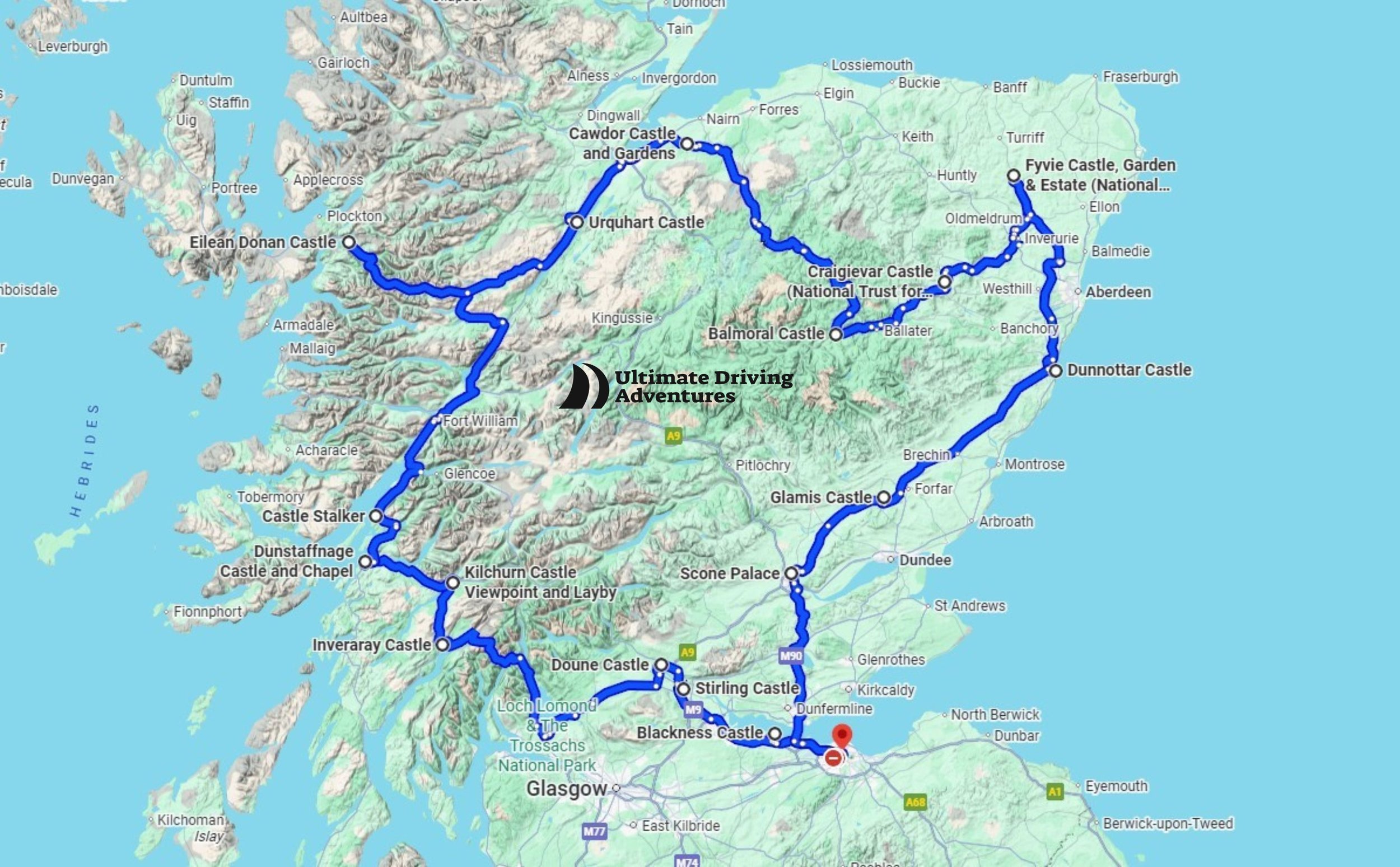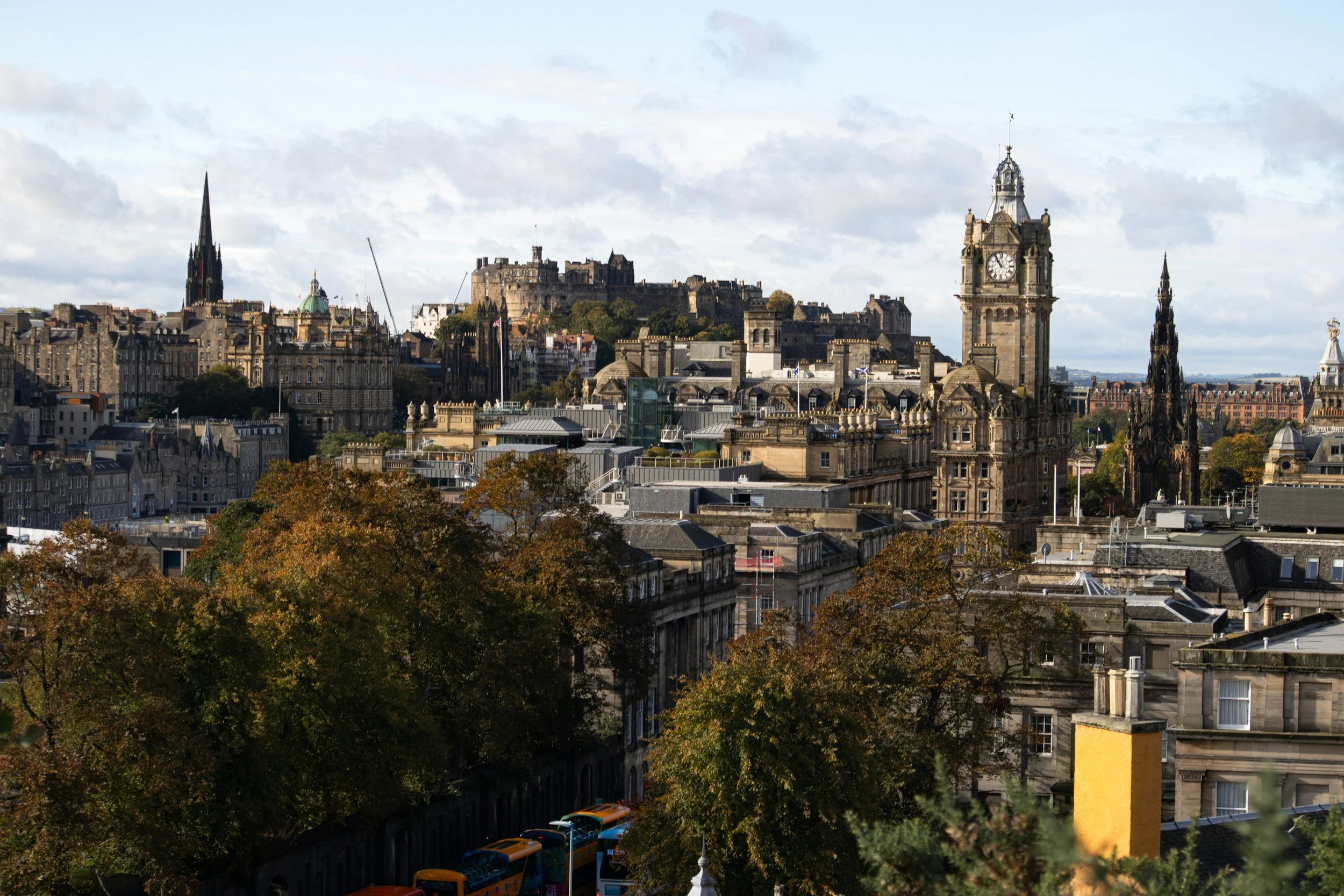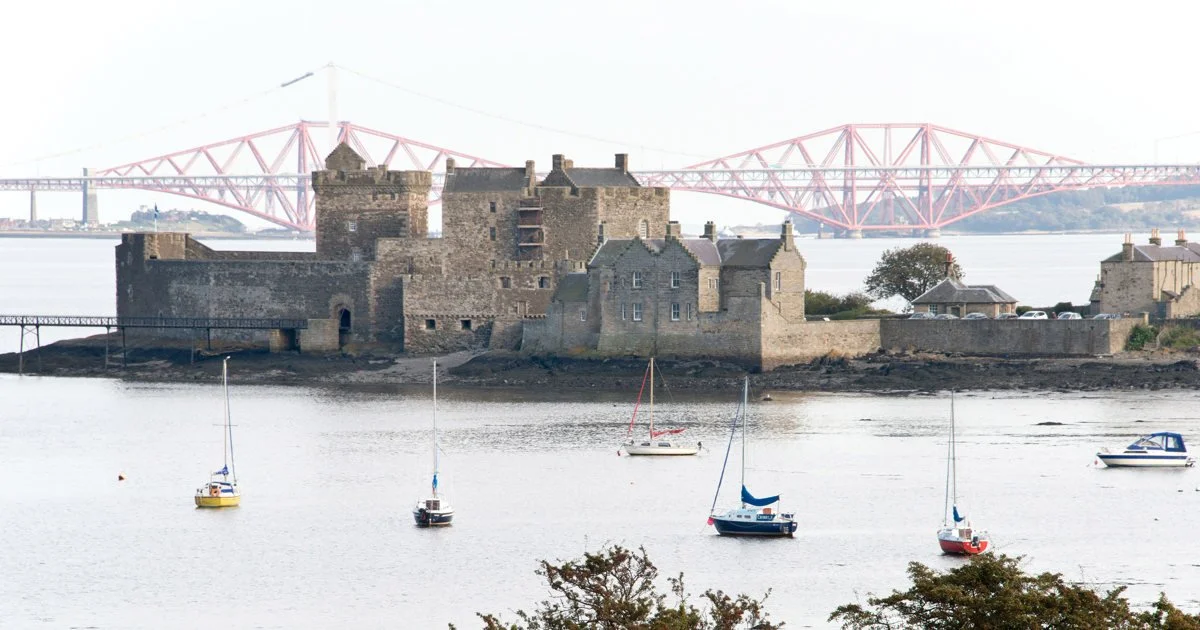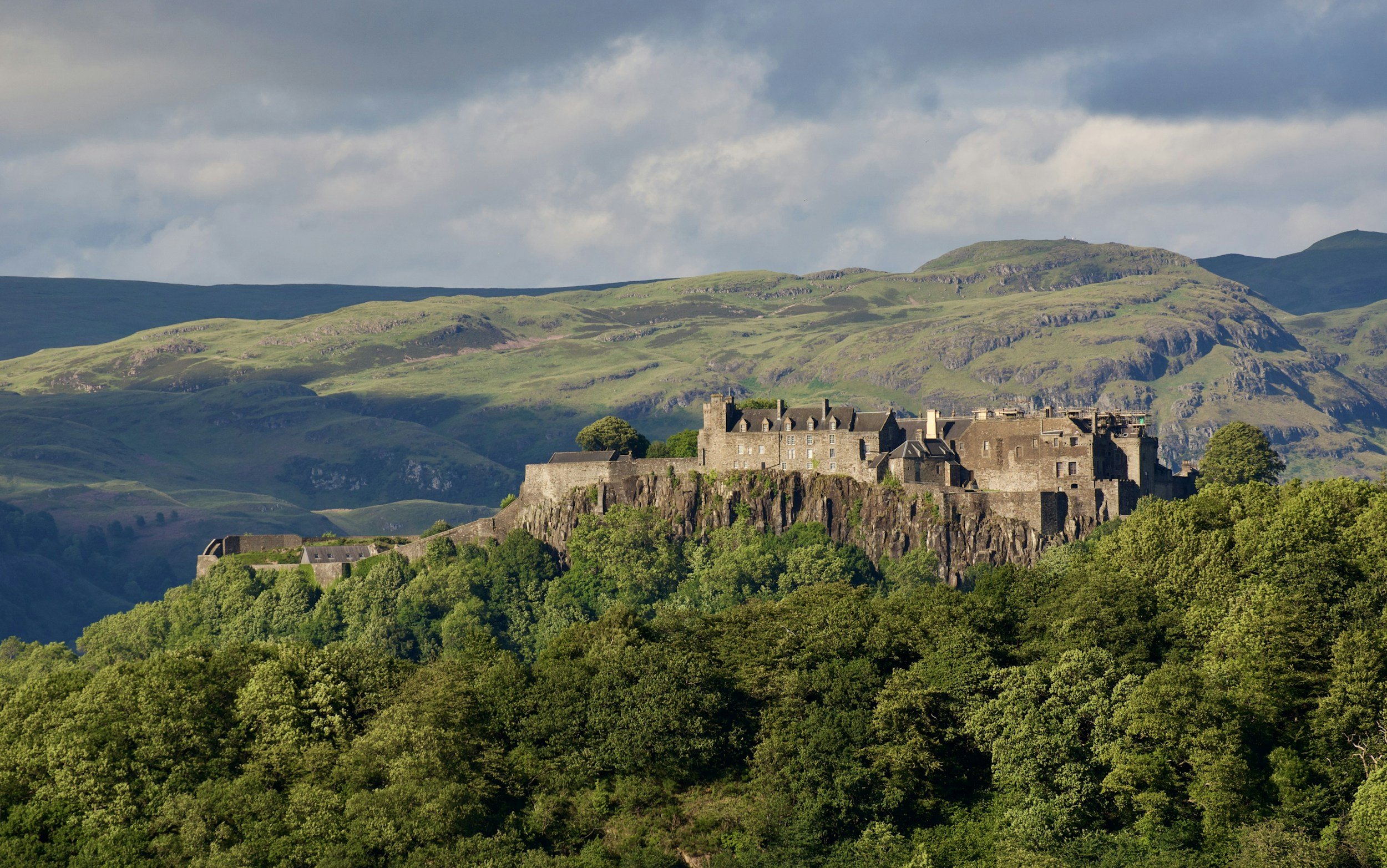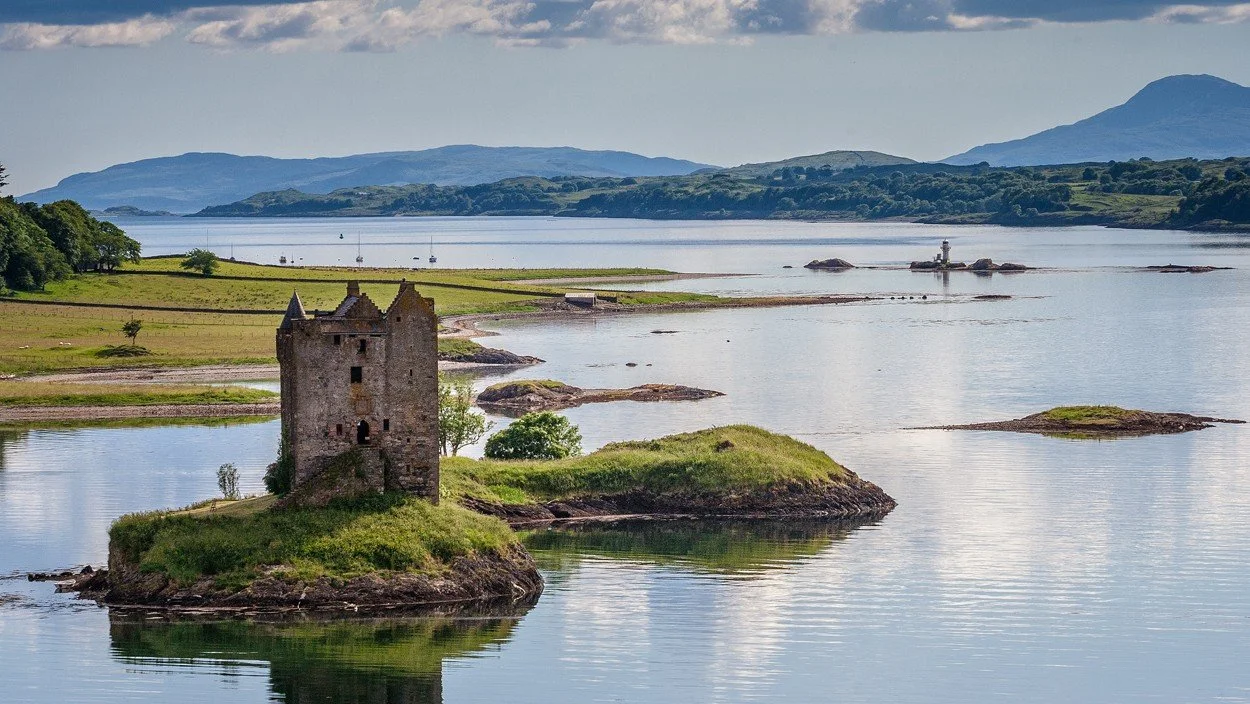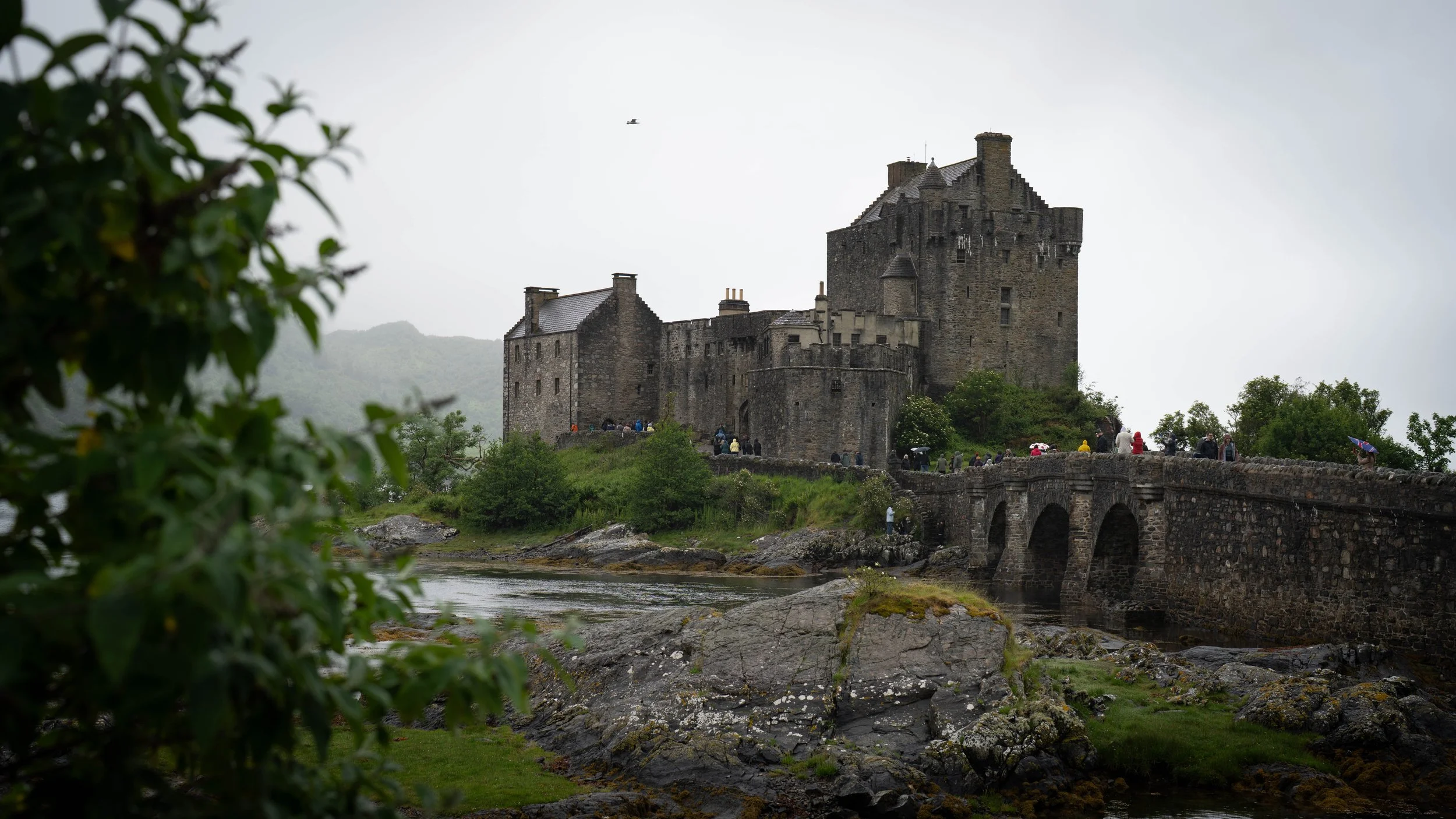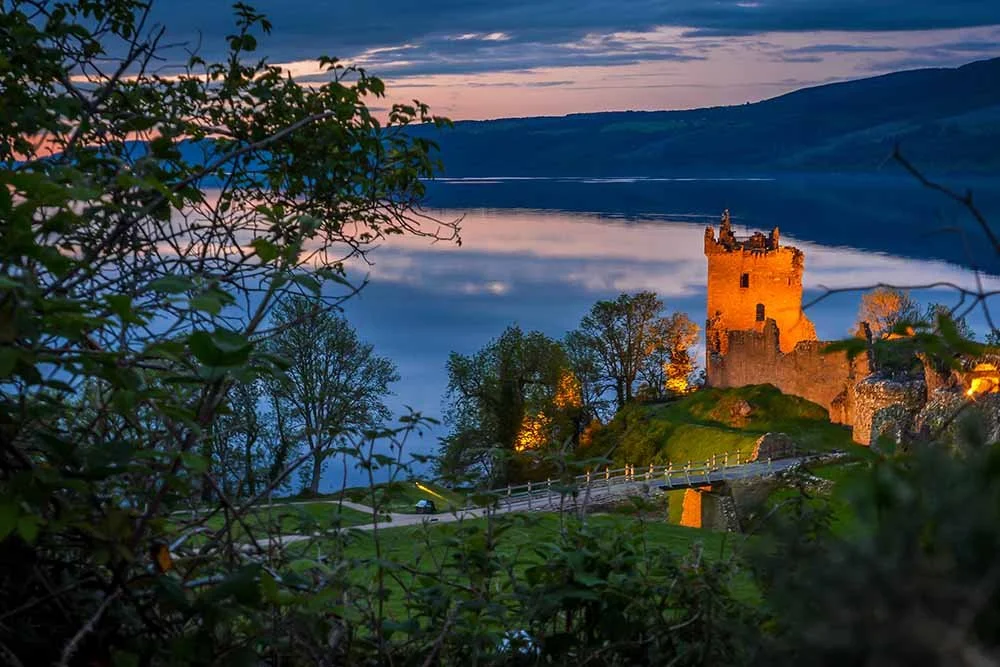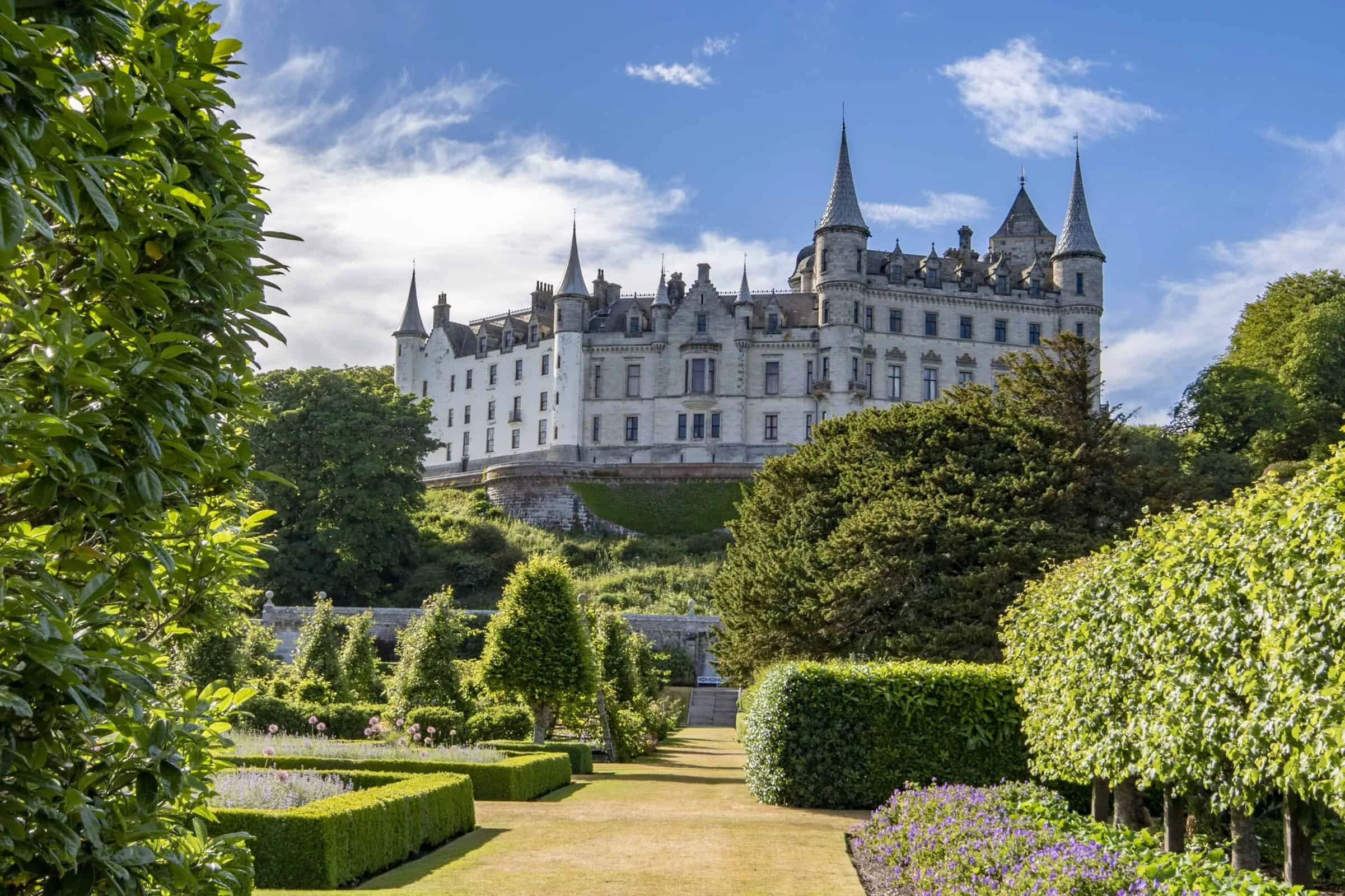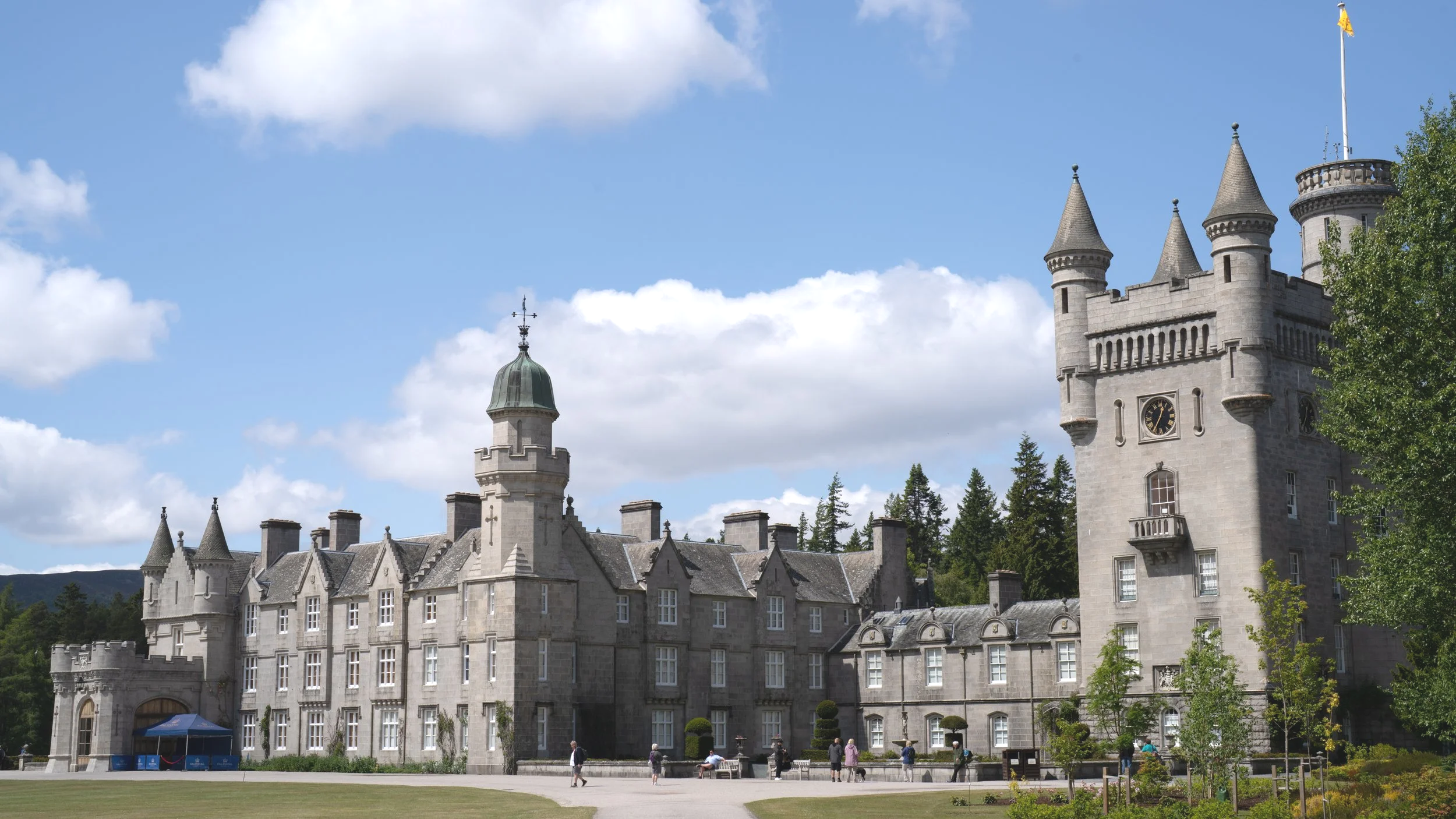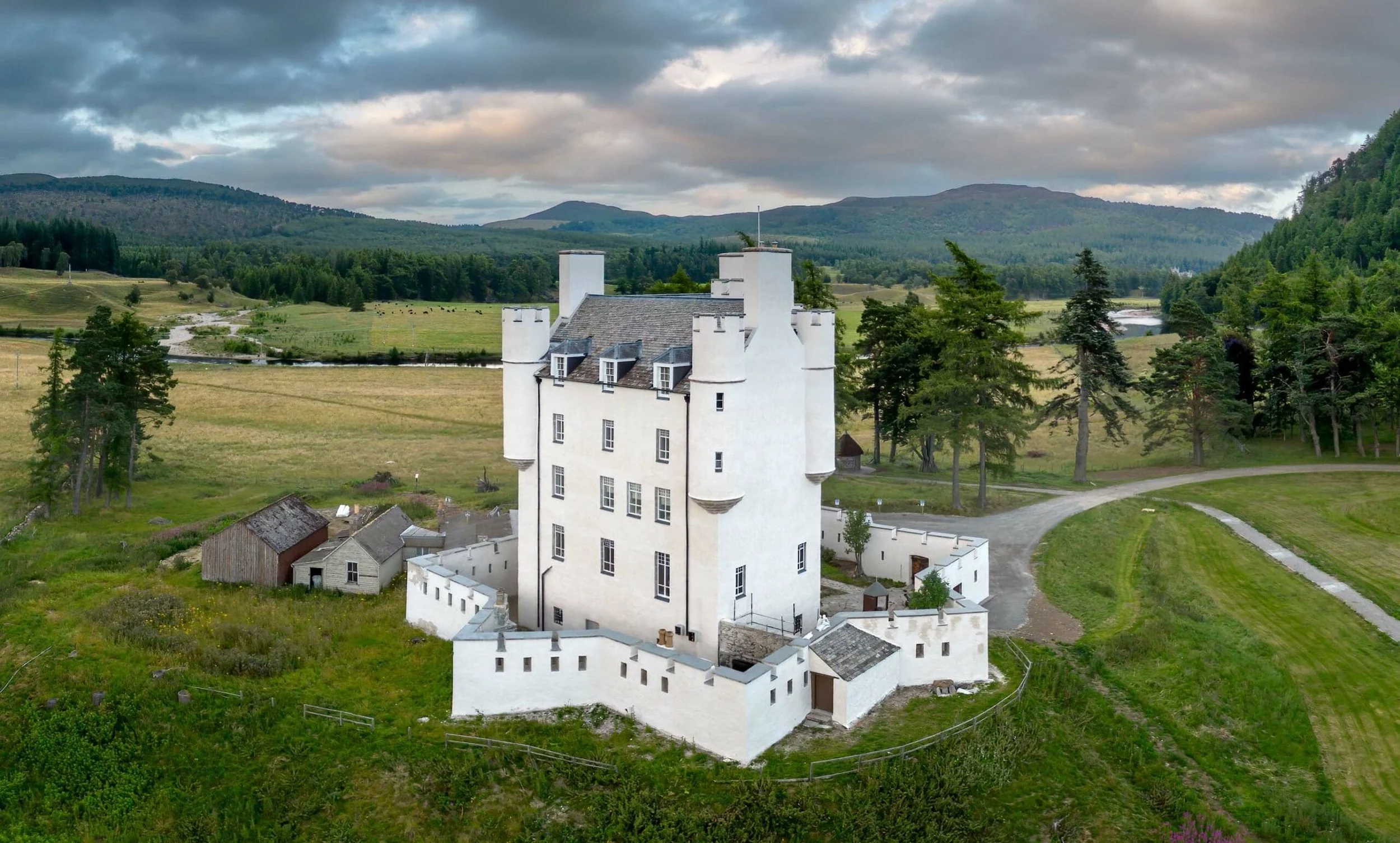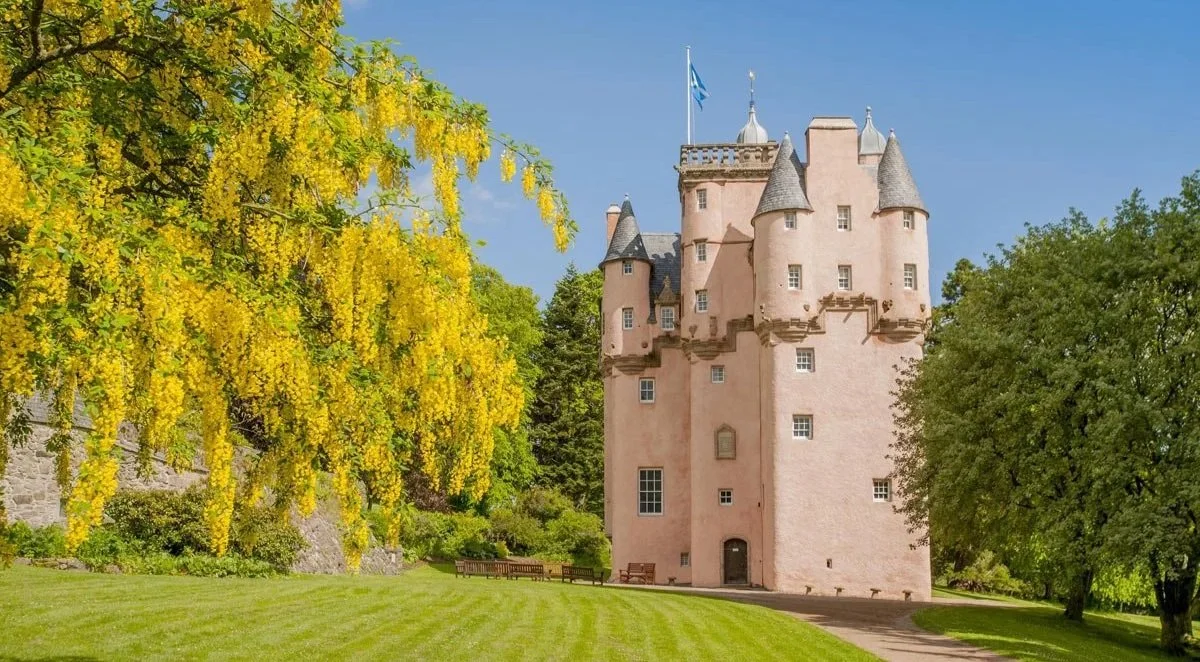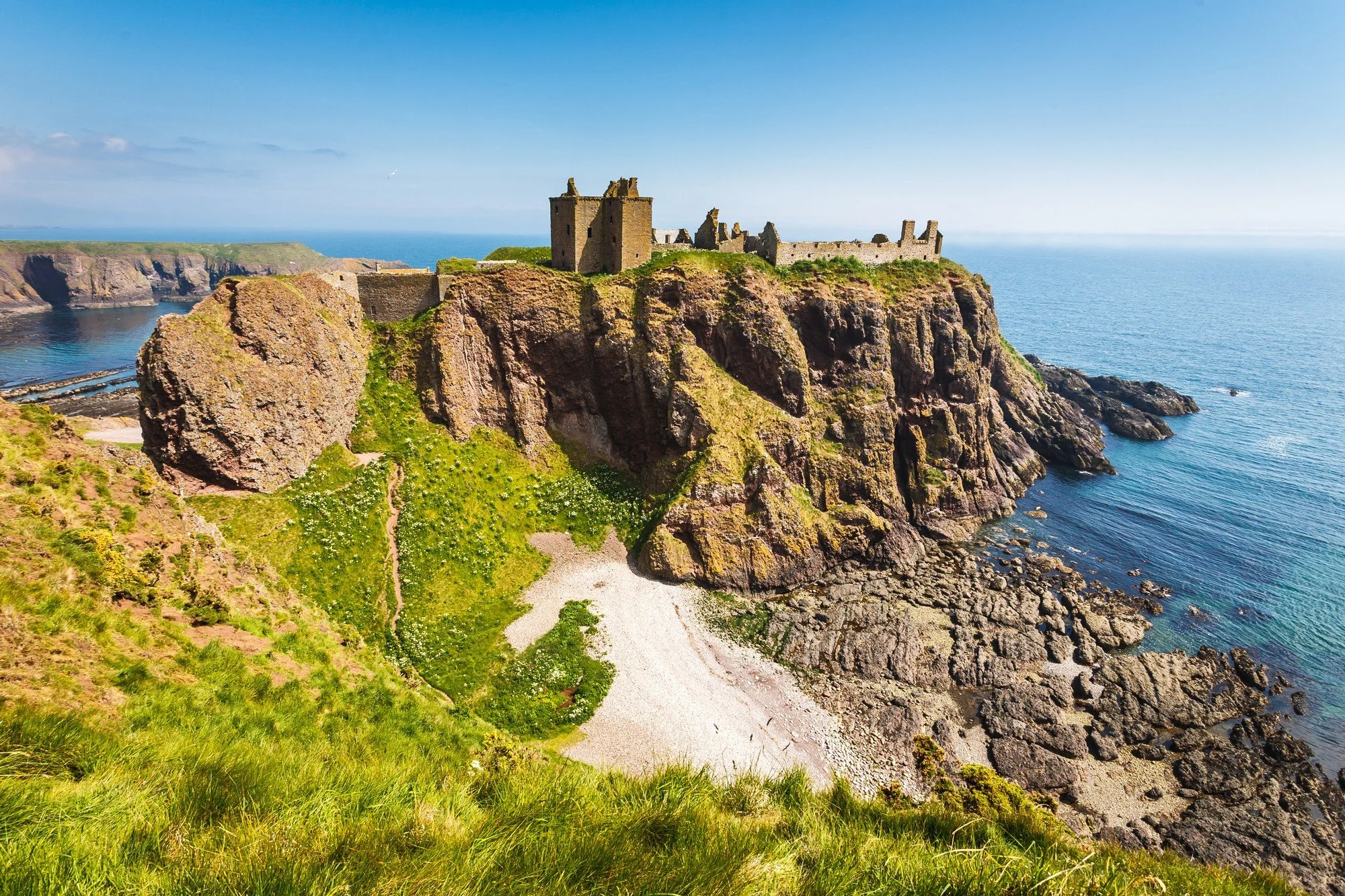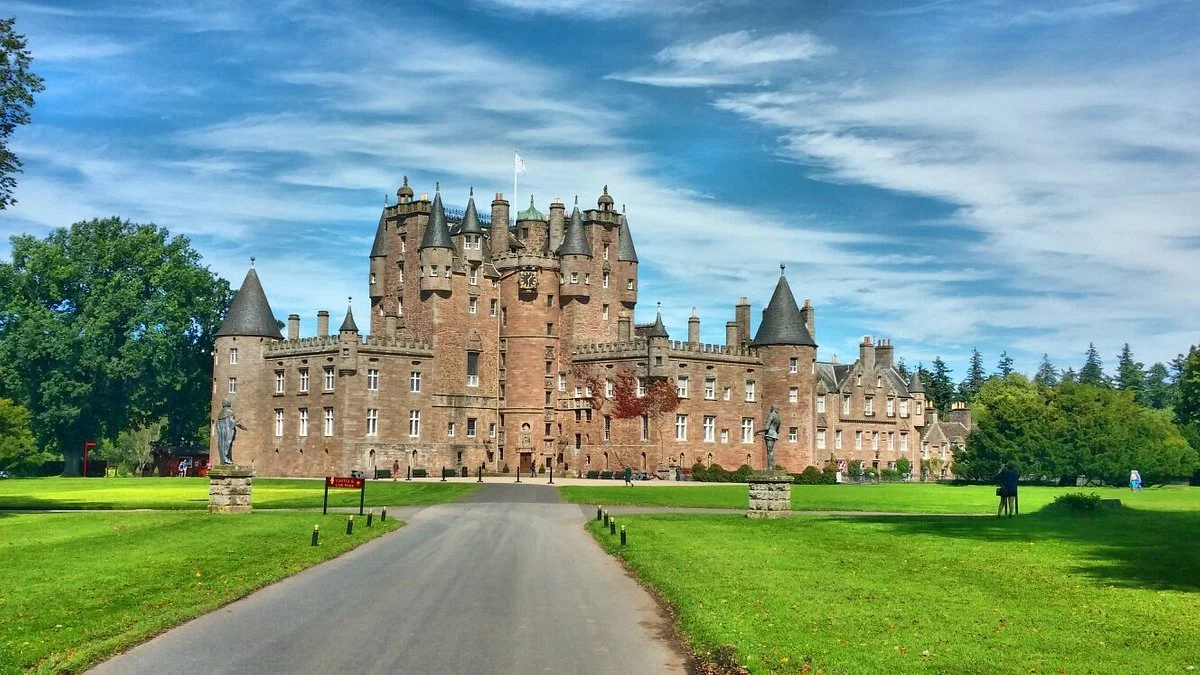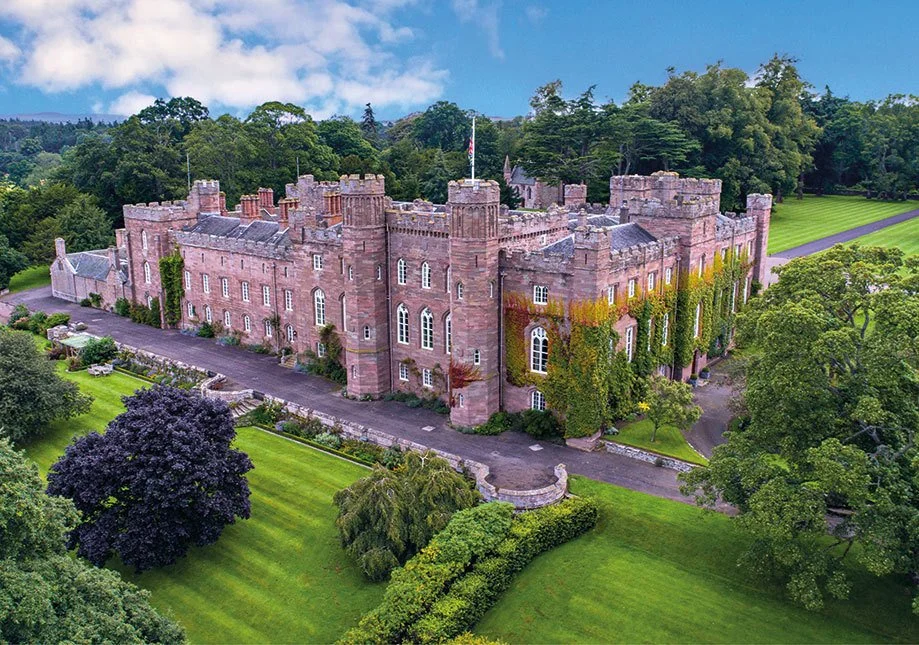The Ultimate Scottish Castle Road Trip…
There is something undeniably magical about a Scottish road trip. The moment you leave the city behind, the landscape begins to change and the roads become a drivers dream... Mountains rise, lochs stretch out like mirrors, and ancient silhouettes appear on distant hillsides. Scotland is a place where history is not tucked away in museums, but lives and breathes in the land. Every castle carries a whisper from the past, of historical significance…
The Ultimate Scottish Castle Road Trip invites you to step into Scottish history. You will walk through great halls where kings once dined, explore fortresses that defended against invasions and wander ruins that have witnessed centuries of change. The adventure is not just about seeing castles, but feeling the presence of what went before, the echo of footsteps, the sweep of the landscape and the sense of mystery and legend these places still hold. Whether you are drawn to dramatic ruins or fairytale towers, this route brings Scotland’s heritage to life and turns every stop into a story worth remembering.
The Ultimate Scottish Castle Road Trip
1. Edinburgh Castle
Edinburgh Castle sits high on Castle Rock and has watched over the city for around nine centuries. Most of what you see today dates from the twelfth century onwards. It is fully intact and still in use, with military presence and public access throughout the year. Did you know that the castle’s One O Clock Gun has been fired almost every day since 1861 as a time signal for ships in the Firth of Forth.
Edinburgh Castle has been central to Scotland’s history for centuries, witnessing royal ceremonies, fierce battles and dramatic sieges. The site itself was a stronghold long before stone walls were built, with human activity traced back to the Iron Age. It played a major role in the Wars of Scottish Independence and changed hands many times between the Scots and the English. The Great Hall was constructed for James IV, while the oldest surviving building, St Margaret’s Chapel, dates to the early twelfth century. The castle also houses the Honours of Scotland and the Stone of Destiny, both powerful symbols of Scottish monarchy.
Although featured in many documentaries, Edinburgh Castle has not been used as a filming location for any major TV series or feature film.
2. Blackness Castle
Blackness Castle was built in the fifteenth century and is known as the ship that never sailed because its shape resembles a great stone vessel. It is largely intact and maintained by Historic Environment Scotland. Did you know it once served as a state prison, holding high status captives during troubled times.
Blackness Castle was constructed for the powerful Crichton family, who were closely tied to the Scottish crown. Its strategic position on the Firth of Forth made it a key defensive stronghold, guarding important shipping routes to and from Edinburgh. Over the centuries it endured several sieges, particularly during the Wars of the Three Kingdoms in the seventeenth century. The castle later became a garrison fortress and ammunition depot, with significant modifications made during the Victorian era to accommodate heavy artillery. Its combination of medieval design and later military adaptations makes it one of Scotland’s most distinctive and historically layered castles.
Blackness Castle has appeared in major productions, including Outlander and the film Mary Queen of Scots.
3. Stirling Castle
Stirling Castle dates back to at least the twelfth century and was a favourite residence of the Stewart kings. It is fully intact and beautifully restored, making it one of Scotland’s most impressive royal castles. Did you know that Mary Queen of Scots was crowned here in 1543 when she was just nine months old.
Stirling Castle has played a pivotal role in Scotland’s history due to its commanding position overlooking the River Forth, often described as the gateway between the Highlands and the Lowlands. Many significant battles unfolded nearby, including the Battle of Stirling Bridge in 1297, where William Wallace famously defeated English forces, and the Battle of Bannockburn in 1314, where Robert the Bruce secured a defining victory. The castle’s Renaissance architecture, particularly the Royal Palace built for James V, reflects strong European influence and showcases Scotland’s royal ambitions during the sixteenth century. For centuries it served not only as a military stronghold but also as the political and cultural heart of the Scottish monarchy.
Stirling Castle has been used mainly for documentaries rather than major TV dramas or films.
4. Doune Castle
Doune Castle was originally built in the late fourteenth century by Robert Stewart, Duke of Albany. It survives in excellent condition with a complete great hall and tower. Did you know it has become a modern filming favourite, appearing in Outlander, Game of Thrones and Monty Python and the Holy Grail.
Doune Castle’s history is closely tied to the power and ambition of the Duke of Albany, who effectively ruled Scotland during the reign of his young nephew, King James I. The castle’s design reflects this authority, blending domestic comfort with formidable defensive features. Its magnificent great hall is one of the best preserved in Scotland, offering insight into medieval banquets and royal gatherings. Over the centuries the castle saw various uses, including serving as a royal hunting lodge and later as a garrison during the seventeenth century conflicts. Although never fully completed according to its original plans, Doune stands today as a remarkable example of late medieval architecture and an enduring symbol of political influence during a turbulent period in Scotland’s past.
Doune Castle is also well known for its appearances in several major productions, including Monty Python and the Holy Grail, Outlander and Game of Thrones.
6. Inveraray Castle
Inveraray Castle was begun in the mid eighteenth century and remains the home of the Duke of Argyll. It is intact, lived in and known for its distinctive gothic style. Did you know that its armoury hall holds the highest ceiling in Scotland.
Inveraray Castle has long been associated with Clan Campbell, one of Scotland’s most influential families. The current structure replaced an older fortress and was designed with a blend of Baroque and Gothic Revival influences, reflecting eighteenth century tastes and the growing emphasis on comfort and grandeur rather than pure defence. Over the years it has hosted royalty, dignitaries and important political figures, and the estate played a notable role during the Jacobite era. The interior is richly decorated with tapestries, portraits and weapons, showcasing the Campbells’ formidable history and wealth.
Inveraray Castle has also been used as a filming location, most famously appearing in Downton Abbey’s Christmas Special.
7. Kilchurn Castle
Kilchurn Castle was built in the mid fifteenth century by the Campbells of Glenorchy. Today it stands as a dramatic and beautiful ruin at the head of Loch Awe. Did you know that at one time it was converted into a government garrison during the Jacobite uprisings.
Kilchurn Castle’s history reflects the rise of the Campbells as one of Scotland’s most powerful clans. The original tower house was expanded over the centuries, including the addition of a barrack block in the late seventeenth century, one of the earliest of its kind in Scotland. Its strategic position made it valuable during turbulent periods, particularly the wars of the seventeenth and eighteenth centuries. A powerful storm in the 1700s is believed to have caused major damage, contributing to its abandonment. Since then it has stood as an iconic ruin, framed by mountains and loch waters, admired by painters and visitors for generations.
Kilchurn Castle has appeared in various television documentaries and travel programmes, but it has not been a central filming location for major films or TV dramas.
8. Dunstaffnage Castle
Dunstaffnage Castle dates back to the thirteenth century and is one of Scotland’s oldest stone fortresses. It remains partially intact with strong outer walls and a roofed gatehouse. Did you know that Flora MacDonald, who aided Bonnie Prince Charlie, was once held here.
Dunstaffnage played a key role in controlling the sea routes of the west coast due to its commanding position at the entrance to Loch Etive. Originally built by the powerful MacDougalls, it later passed to the Campbells after they supported Robert the Bruce during his rise to the throne. The castle endured several sieges and witnessed significant political shifts throughout the medieval and early modern periods. The surrounding grounds contain the ruins of an old chapel, believed to date from the thirteenth century, adding even more depth to the site’s heritage.
Dunstaffnage Castle has appeared in a number of historical and archaeological documentaries, though it has not been used as a major filming location for mainstream TV dramas or feature films.
9. Castle Stalker
Castle Stalker is a fourteenth century tower house set on a small tidal islet on Loch Laich. It is fully intact and beautifully preserved, rising dramatically from the water and accessible only by boat or at very low tide. Did you know that the name “Stalker” comes from the Gaelic Stalcaire, meaning “hunter” or “falconer,” reflecting the castle’s early use as a hunting retreat.
The castle’s origins trace back to the MacDougalls, who first held the lands before losing them to the Stewarts in the mid fourteenth century. Over time, Castle Stalker became closely associated with the Stewart and Campbell clans, changing hands through alliances, conflicts and political shifts. Its isolated position made it both defensible and symbolic, offering sweeping views across the surrounding lochs and mountains. After centuries of wear and partial abandonment, the castle was restored in the twentieth century by Charles Stewart of Achara, returning it to much of its former glory.
Castle Stalker is also well known for its appearance in Monty Python and the Holy Grail, where it features as “Castle Aaargh.”
10. Eilean Donan Castle
Eilean Donan Castle has thirteenth century origins but the current postcard perfect structure was rebuilt in the early twentieth century. It is fully intact and privately managed. Did you know it was blown up in 1719 during a Jacobite uprising and lay in ruins for almost two hundred years before restoration.
Eilean Donan’s early history centres on its strategic placement where three sea lochs meet, making it an ideal stronghold for controlling the waterways of the west coast. The castle was long associated with Clan Mackenzie and their allies, Clan MacRae, who served as hereditary constables. After its destruction in the early eighteenth century, the island remained abandoned until Lieutenant Colonel John MacRae-Gilstrap purchased and rebuilt it between 1912 and 1932, creating the iconic structure we recognise today. Its restoration blended historic research with imaginative reconstruction, reviving a romantic vision of medieval Scotland that still captures the imagination of visitors.
Eilean Donan Castle is also one of Scotland’s most filmed locations, appearing in productions such as Highlander, The World Is Not Enough and Maid of Honour.
11. Urquhart Castle
Urquhart Castle was developed between the thirteenth and sixteenth centuries and now stands as a large and spectacular ruin overlooking Loch Ness. Did you know that it is one of the most visited castle sites in Scotland, partly due to its connection with the Loch Ness legend.
Urquhart Castle has witnessed some of the most dramatic moments in Highland history. Originally held by Clan Durward, it later became a stronghold caught between English and Scottish control during the Wars of Independence. Throughout the medieval period it was repeatedly attacked, captured and rebuilt, reflecting its strategic importance on the Great Glen waterway. In the seventeenth century, government troops stationed there blew up sections of the castle to prevent it falling into Jacobite hands, leaving the ruins that stand today. Its prominent position on Loch Ness, combined with its turbulent past, makes it an enduring symbol of Scotland’s frontier history.
Urquhart Castle has appeared in numerous historical documentaries and travel features, though it has not been used as a primary location for major TV dramas or films.
11. Cawdor Castle
Cawdor Castle was built in the late fourteenth century and is still lived in by the Cawdor family. It is fully intact and surrounded by lovely gardens. Did you know that legend claims the site was chosen by a donkey carrying a chest of gold which lay down under a holly tree, marking the spot.
Cawdor Castle’s history blends real medieval heritage with folklore and literary fame. Originally constructed as a private fortress for the Thanes of Cawdor, the castle was expanded over the centuries into a grand and comfortable residence. Its connection to Shakespeare’s Macbeth has long added to its mystique, even though the historical Macbeth lived centuries before the castle was built. Inside, the rooms are filled with fine tapestries, portraits and antique furniture, reflecting the wealth and influence of the Cawdor family across generations. Its surrounding woodland, gardens and nature trails make it one of the most picturesque inhabited castles in the Highlands today.
Cawdor Castle has appeared in several historical and garden-related television features, though it has not been used as a primary filming location for major films or TV dramas.
12. Dunrobin Castle (optional)
Dunrobin Castle has medieval origins but much of its grand design comes from the nineteenth century. It is intact, lived in and looks more like a French chateau than a Scottish stronghold. Did you know it has almost two hundred rooms, making it one of the largest houses in the Highlands.
Dunrobin Castle has long been the ancestral home of the Earls and Dukes of Sutherland, one of Scotland’s most prominent aristocratic families. The earliest parts of the structure date back to the 1300s, though the castle underwent major transformations during the Victorian era when architect Sir Charles Barry, who also designed the Houses of Parliament, remodelled it extensively. His French influenced design resulted in the tall conical spires and ornate detailing that give the castle its distinctive fairytale appearance today. The castle overlooks the Moray Firth and has been a seat of power, a family home and, for a period, even a naval hospital during the First World War.
Dunrobin Castle has featured in travel documentaries and heritage programmes but has not served as a major filming location for high profile TV dramas or films.
13. Balmoral Castle
Balmoral Castle was completed in 1856 and remains a private residence of the Royal Family. It is fully intact and set within a huge estate. Did you know that Prince Albert chose the position and layout himself, influencing the final design that still stands today.
Balmoral Castle has been one of the Royal Family’s most cherished retreats for generations, particularly favoured by Queen Victoria and Prince Albert, who purchased the estate in 1852. Finding the original house too small, they commissioned a new granite castle in the Scottish Baronial style, which has since become iconic. The surrounding estate spans thousands of acres of moorland, woodland and hills, forming an important part of Scottish rural heritage and conservation. Over the years Balmoral has been a place of both personal joy and significant royal events, providing privacy and tranquillity away from public life.
Balmoral Castle has appeared in various documentaries and dramatised series about the Royal Family, including features within The Crown, although filming did not take place inside the real castle.
14. Braemar Castle
Braemar Castle was built in 1628 by the Earl of Mar as a stronghold in the heart of the Cairngorms. It is fully intact and known for its distinctive star-shaped curtain wall, a rare design in Scotland. Did you know that the castle was burned in the Jacobite rising of 1689 and rebuilt shortly after, leaving scorch marks still visible inside.
Braemar Castle’s history is tightly interwoven with the political turbulence of the Highlands. Originally designed both as a residence and a defensive fortress, it served as a strategic garrison during the eighteenth century, particularly throughout the Jacobite uprisings when government troops occupied it. Later, the castle was leased to Clan Farquharson, who transformed it into a comfortable family home, furnishing it with portraits, weapons and treasures that still fill its rooms today. Its surrounding landscape of mountains and pine forests reflects centuries of clan power, military strategy and Highland tradition.
Braemar Castle has featured in historical documentaries and travel programmes, although it has not been used as a primary filming location for major films or television dramas.
15. Craigievar Castle
Craigievar Castle was completed in the early seventeenth century and is famous for its fairytale style. It is intact and preserved almost exactly as it was centuries ago. Did you know that its pink coloured exterior is entirely authentic and has become one of the most photographed castle fronts in Scotland.
Craigievar Castle was built by the Forbes family and stands as one of the finest surviving examples of Scottish Baronial architecture. Its distinctive turrets, crow stepped gables and narrow windows reflect a style designed as much for prestige as for defence. The castle remained in the Forbes family until the 1960s, when it was entrusted to the National Trust for Scotland along with many of its original furnishings. Inside, visitors can still see rare artefacts, family portraits and intricately carved ceilings that have survived remarkably well for more than three hundred years. Surrounded by rolling woodland and parkland, Craigievar offers a peaceful glimpse into noble life in rural Aberdeenshire.
Craigievar Castle has appeared in documentaries and architectural programmes but has not been used as a primary location for major TV dramas or films.
16. Fyvie Castle
Fyvie Castle dates from the thirteenth century and has been added to by several noble families. It is fully intact, richly furnished and managed by the National Trust. Did you know that it is often linked with ghost stories, including the Green Lady who is said to roam its halls.
Fyvie Castle has a long and complex history, shaped over centuries by the families who expanded and rebuilt it. Originally a royal stronghold, it later passed into the hands of influential clans such as the Prestons, the Meldrums, the Setons, the Gordons and the Forbeses, each leaving their architectural mark. This layered development created the castle’s distinctive mix of towers, grand interiors and lavish detailing. Inside, visitors can admire an exceptional collection of portraits, tapestries, armour and antiquities, much of it preserved exactly as it was left by the Forbes family. The castle is also steeped in folklore, including tales of cursed rooms, prophetic stones and restless spirits, making it one of Scotland’s most atmospheric historic homes.
Fyvie Castle has appeared in historical and paranormal documentaries but has not been used as a main filming location for major TV dramas or films.
17. Dunnottar Castle
Dunnottar Castle is a ruined medieval fortress set on a dramatic clifftop with origins in the fifteenth century. Its remains are extensive and atmospheric. Did you know that the Honours of Scotland, the Crown Jewels, were once hidden here to keep them safe from Cromwell’s forces.
Dunnottar Castle’s location is one of the most striking in Scotland, perched on a rocky headland surrounded on three sides by the North Sea. The site has been fortified since the early Middle Ages, and over the centuries it developed into an important stronghold for the Earls Marischal, one of the most powerful families in Scotland. It played a central role during the seventeenth century conflicts, including the Civil Wars, when a small garrison held out long enough to smuggle the Crown Jewels to safety. The castle’s dramatic setting and turbulent past give it a unique presence, making it a favourite among historians, photographers and visitors alike.
Dunnottar Castle has been featured in several major productions, including the film Hamlet (1990) starring Mel Gibson and the movie Victor Frankenstein (2015).
18. Glamis Castle
Glamis Castle developed from a fourteenth century keep and is now a grand, fully intact family home. It is closely associated with the Royal Family. Did you know that it is the childhood home of the late Queen Mother and the birthplace of Princess Margaret.
Glamis Castle has been the ancestral seat of the Bowes Lyon family for centuries and carries a rich blend of legend, royal history and grand architecture. The present layout and façade reflect major seventeenth and eighteenth century expansions, transforming the original fortified tower into a stately residence filled with ornate rooms, tapestries and portraits. Glamis is also known for its folklore, including stories of hidden rooms, mysterious figures and the famous tale of the Monster of Glamis. Its extensive grounds, gardens and woodland walks further add to its charm, making it one of the most enchanting castles in Scotland.
Glamis Castle has featured in historical documentaries and is often referenced in Shakespearean discussions due to its connection with Macbeth, though it has not been used as a primary filming location for major TV dramas or films.
19. Scone Palace
Scone Palace has roots going back to medieval times, although the current grand building dates from the early nineteenth century. It is fully intact and privately owned but open to the public. Did you know that it was once the crowning place of Scottish kings, where the Stone of Destiny originally rested.
Scone has been at the heart of Scottish royal tradition for over a thousand years. Long before the present palace stood, the ancient abbey at Scone served as a ceremonial centre where many kings, including Robert the Bruce, were crowned. The surrounding grounds were historically known as the Moot Hill, a symbolic place where nobles would gather to swear loyalty to the new monarch. After the Reformation, the abbey fell into ruin and the estate later passed into the hands of the Murray family, who built the current palace in a striking Gothic style during the early 1800s. Today it remains one of Scotland’s most important historic sites, preserving centuries of royal heritage.
Scone Palace has also appeared in several historical television documentaries, though it has not been used as a primary location for major film or drama productions.
Road Trip Package
Duration: 7–10 days.
This gives you enough time to enjoy each castle properly, take in the landscapes and appreciate the open road without feeling rushed.Distance: 629 miles.
A comfortable and varied route with plenty of scenic stretches.Vehicle:
We recommend either a Mini Cooper, a Porsche Boxster or a Land Rover, depending on the time of year and the type of adventure you prefer.Time of Year:
Most castles are open to visitors between May and September. However, Scotland is beautiful throughout the year. Autumn and winter offer incredible scenery and atmosphere, though access inside some castles may be limited outside the main season.
Would you like to do this road trip? All the planning done for you? For pricing and availablity on this self-drive adventure, get in touch with the team and get your ultimate adventure booked!


